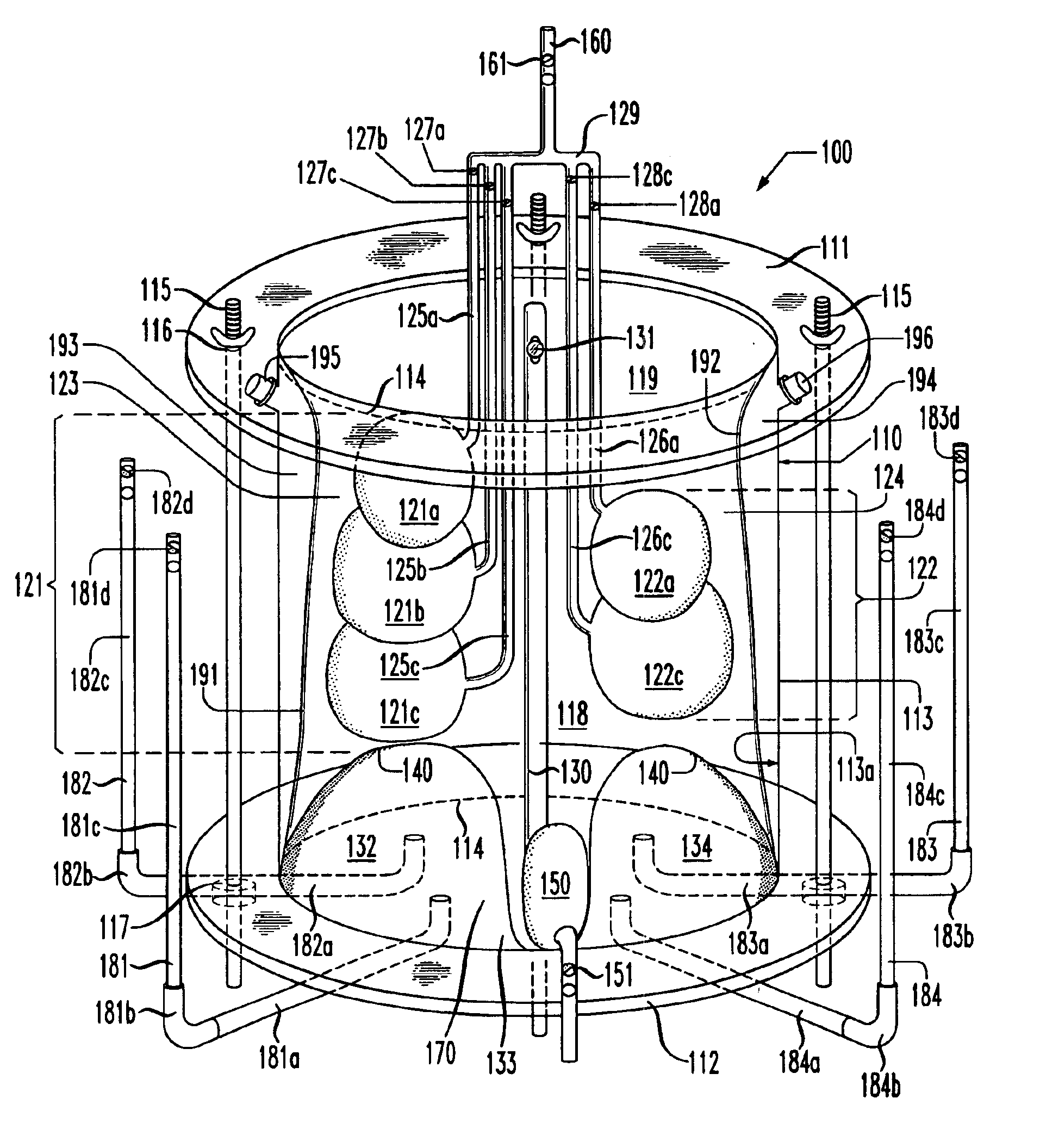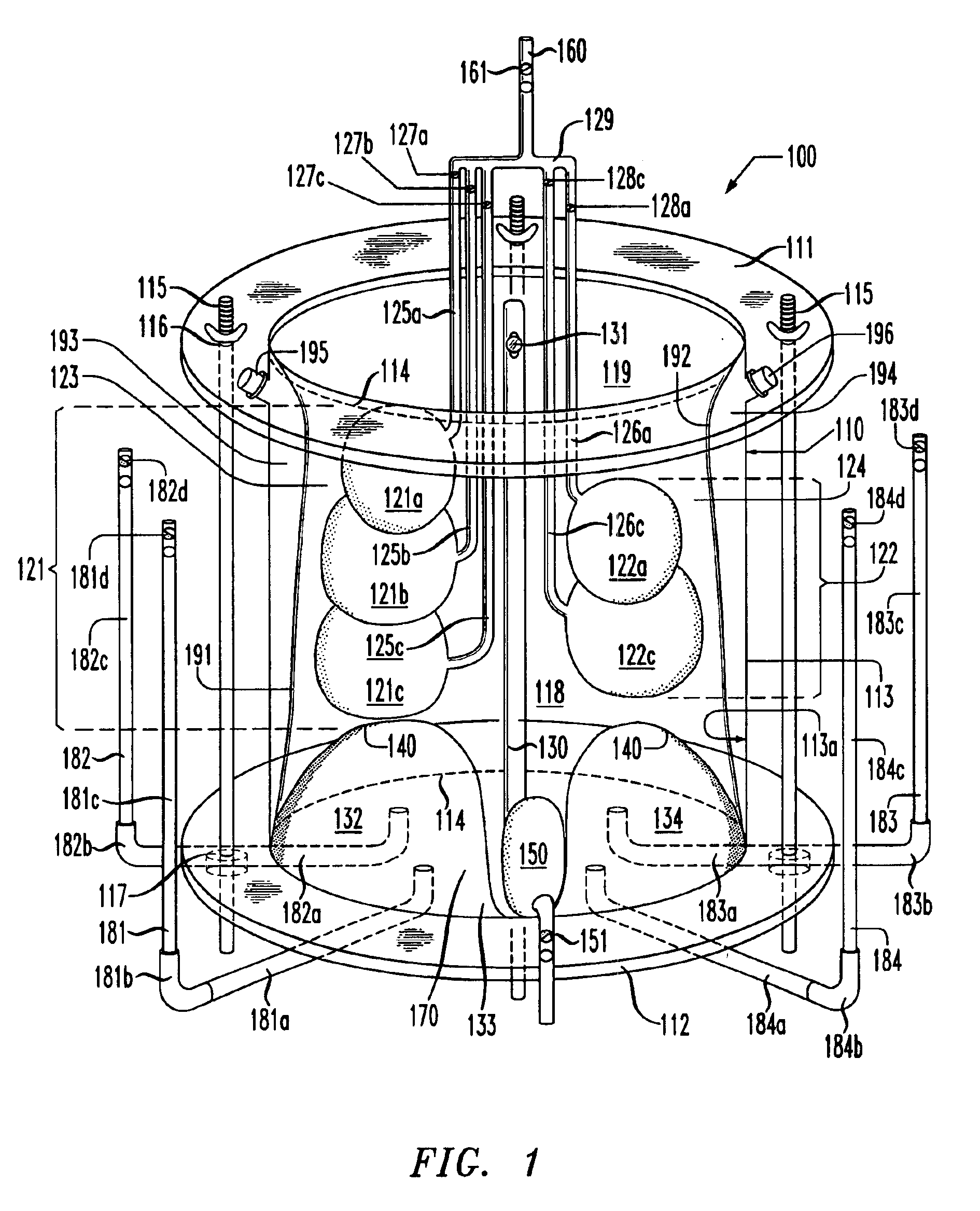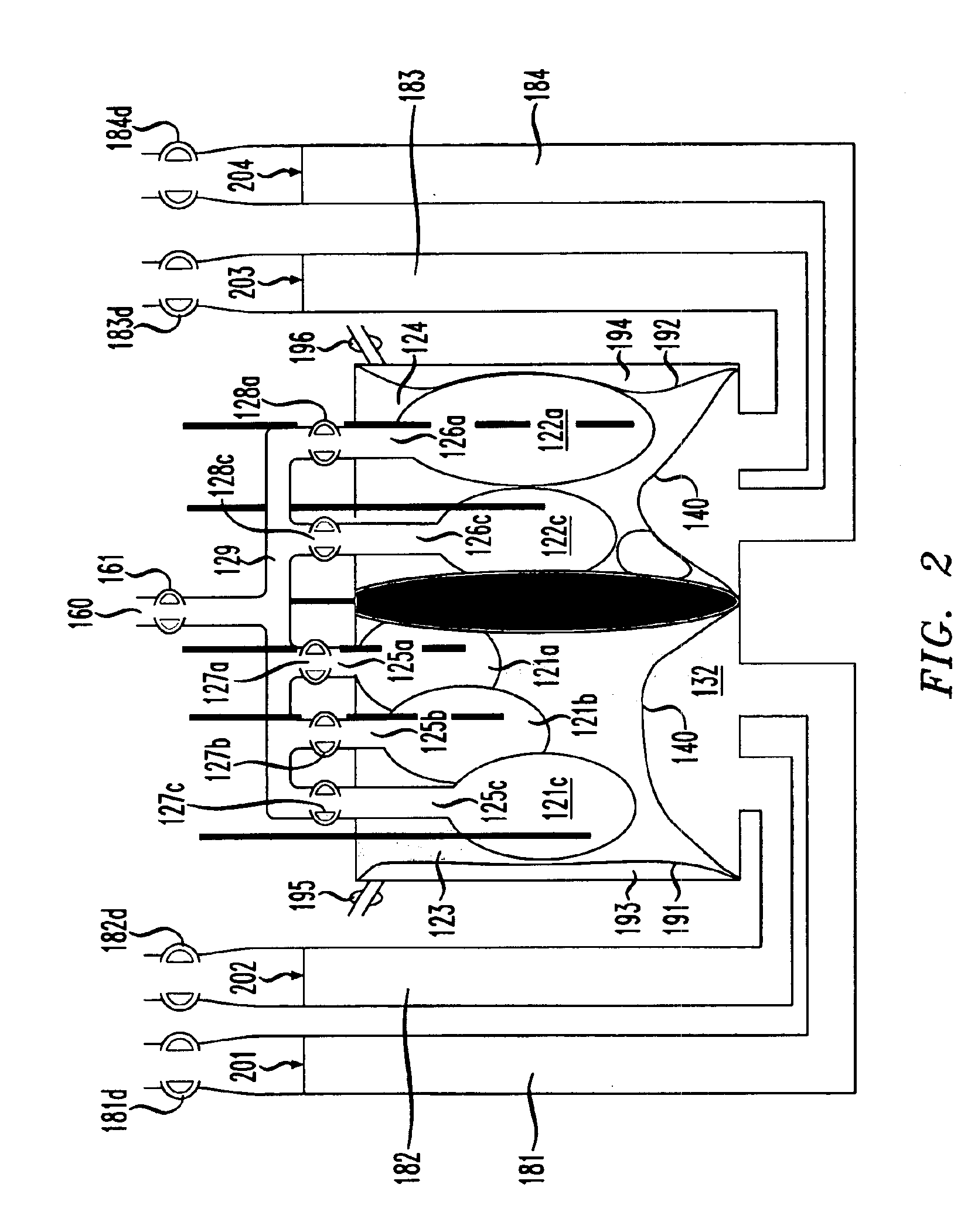Lung simulator
a simulator and lungs technology, applied in the field of lung simulators, can solve the problems of not being able to demonstrate the interaction between the lungs and the fixed masses, not being able to achieve the symmetrical relationship between the fixed masses and the two simulated lungs, and being limited to the devi
- Summary
- Abstract
- Description
- Claims
- Application Information
AI Technical Summary
Benefits of technology
Problems solved by technology
Method used
Image
Examples
Embodiment Construction
Referring initially to FIG. 1, illustrated is a front elevation, partial sectional view of a lung simulator 100 constructed according to the principles of the present invention. The lung simulator 100, in the particular embodiment shown, comprises a simulated human thoracic cavity 110, right and left simulated human lungs 121, 122, respectively, a simulated mediastinum 130, a simulated human diaphragm 140, a simulated human heart 150, a simulated human trachea 160, a simulated lower abdominal cavity 170, a plurality of manometers 181-184, and right and left flexible membranes 191, 192, respectively, that define right and left simulated pleural spaces 193, 194, respectively. In a preferred embodiment, the simulated human thoracic cavity 110 is a substantially-rigid, fluid-tight, translucent housing 110 constructed primarily of sheet polymethylmetracrylate. In a preferred embodiment, the housing 110 is transparent so as to make changes internal to the housing 110 readily visible. Of c...
PUM
 Login to View More
Login to View More Abstract
Description
Claims
Application Information
 Login to View More
Login to View More - R&D
- Intellectual Property
- Life Sciences
- Materials
- Tech Scout
- Unparalleled Data Quality
- Higher Quality Content
- 60% Fewer Hallucinations
Browse by: Latest US Patents, China's latest patents, Technical Efficacy Thesaurus, Application Domain, Technology Topic, Popular Technical Reports.
© 2025 PatSnap. All rights reserved.Legal|Privacy policy|Modern Slavery Act Transparency Statement|Sitemap|About US| Contact US: help@patsnap.com



